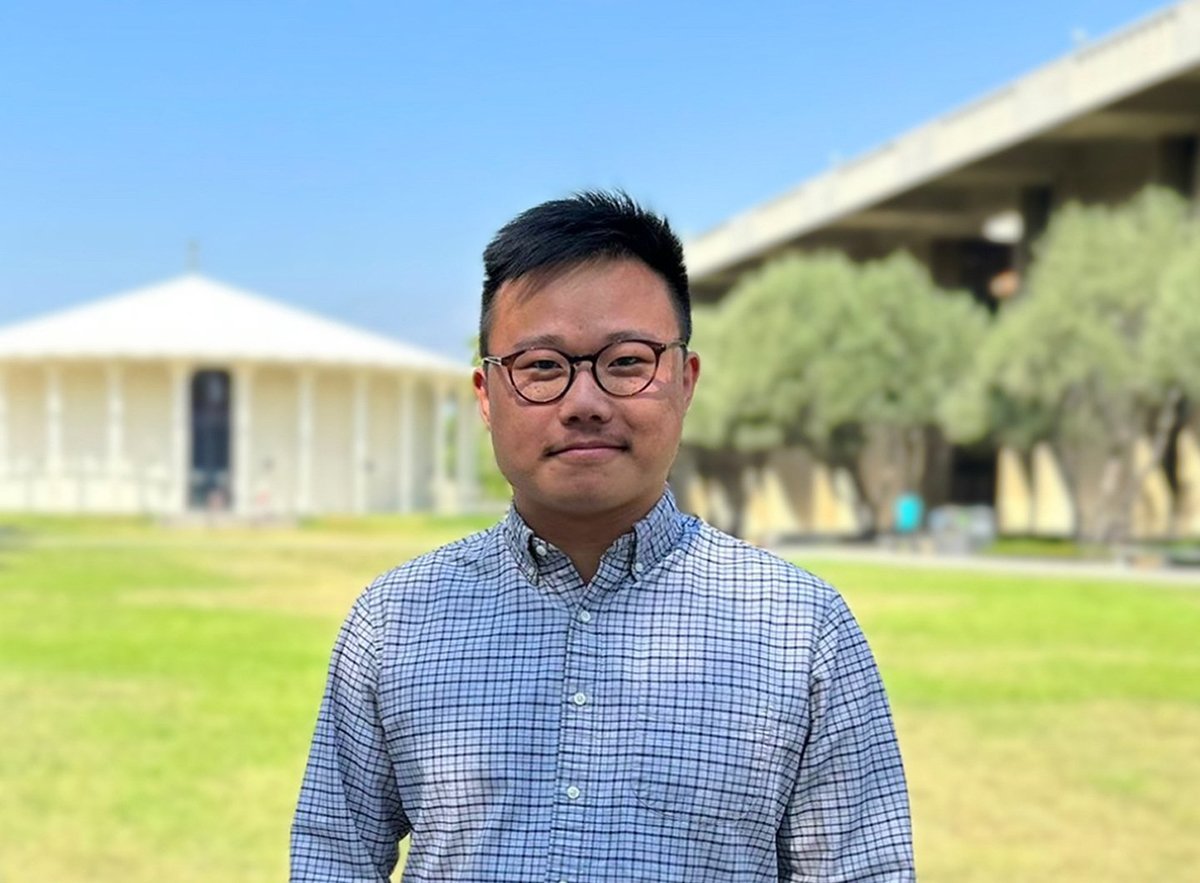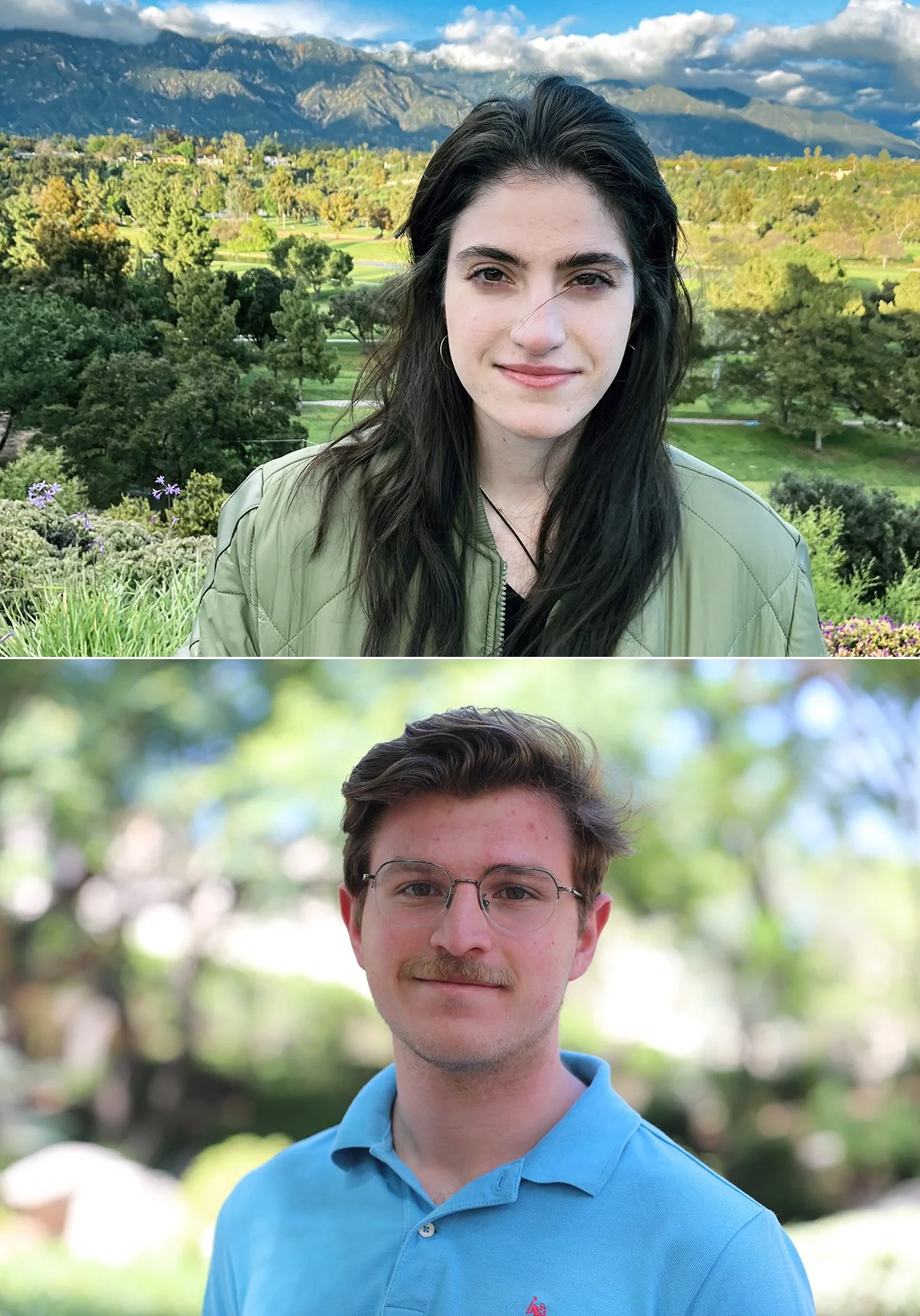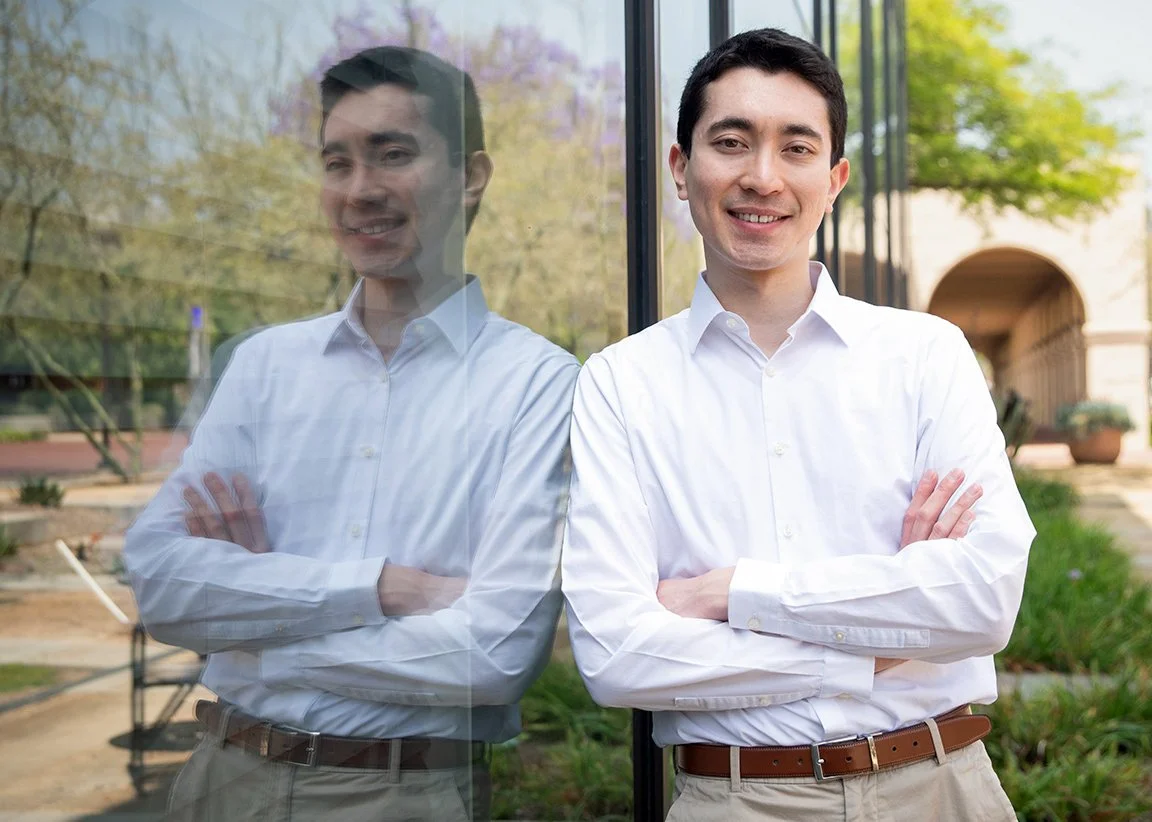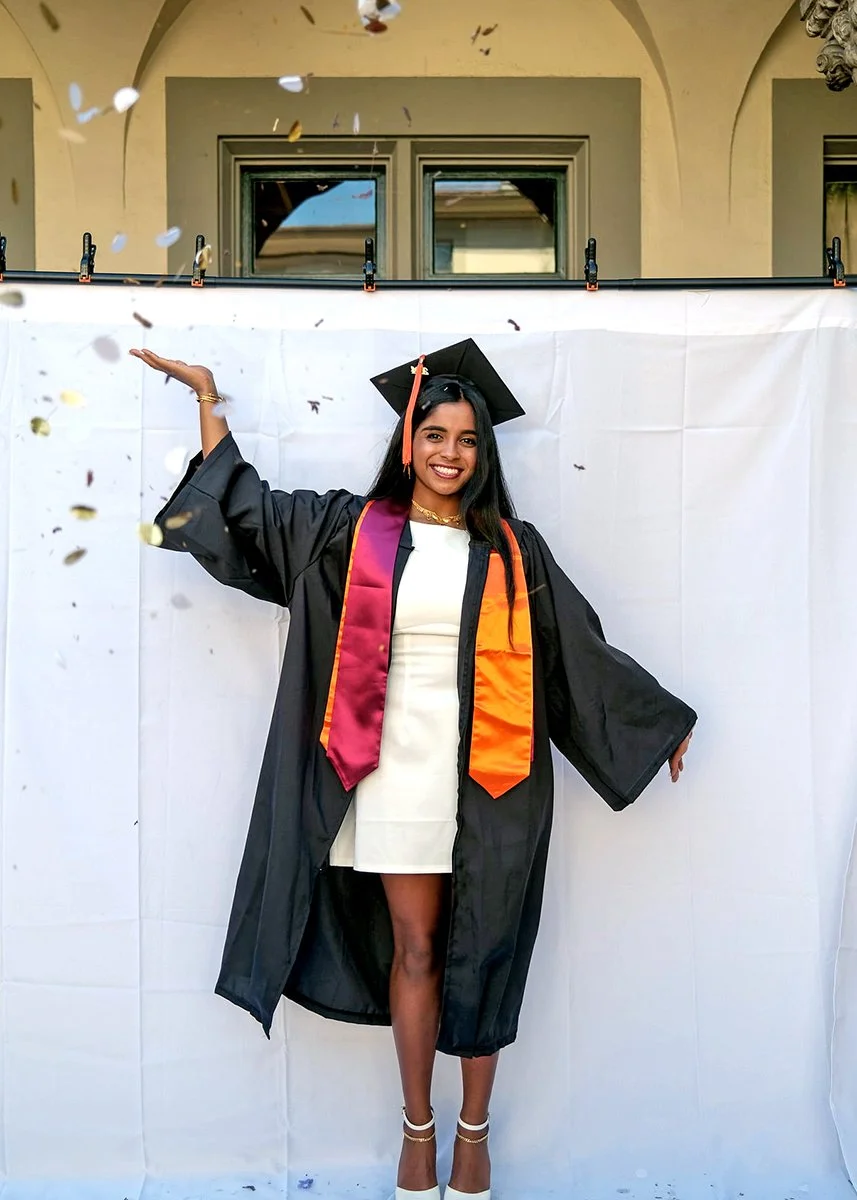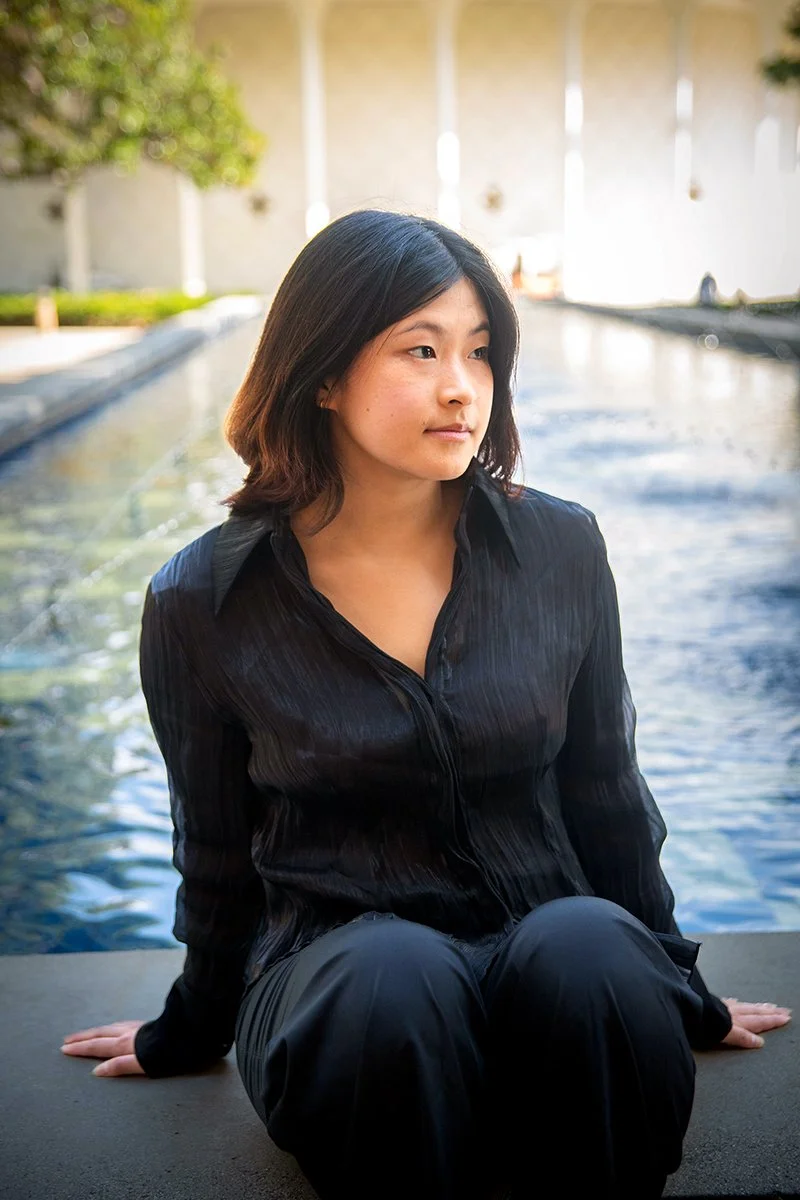#SoCaltech: Meet Caltech’s 2024 Graduates
Nine of Caltech’s 2024 graduates discuss the value of curiosity, perseverance, creativity, and lessons learned during their time at the Institute.
Peiwei Chen
“We are all trying to do good, interesting work, but when you're recognized, you begin to think that you're not the only one who finds it interesting, and that's a wonderful feeling. It can be easy to forget how important curiosity-driven science is. Winning the Weintraub Award has helped me remember what a privilege it has been to pursue my curiosity without worrying about much else. I feel very lucky to be in a position to ponder, to wonder, to get lost thinking about things I've never thought about before. That's when the magic happens."
Peiwei Chen is graduating with his PhD in biology after working in the lab of Alexei Aravin, professor of biology. He is one of 12 graduate students worldwide to receive the Harold M. Weintraub Graduate Student Award for exceptional achievement in biology graduate studies.
Chen studies selfish genes—genes that seek to enhance their own survival, not necessarily to the benefit of the organism they are in—and the piRNA pathway, which defends the genome by silencing selfish genes. Chen was also one of two graduate students selected by Caltech’s Graduate Student Council (GSC) to deliver an Everhart Lecture for the public about his research. While at Caltech, Chen founded the Lab Equipment Access Program (LEAP), which donates lab equipment to under-resourced high schools. He also served as a member of the Accessibility Committee of the Genetics Society of America to promote accessibility for early-career scientists with disabilities.
Chen will begin a postdoc at Cornell University this fall, where he plans to continue to explore selfish genes and the mechanisms that protect against them.
Patill (top) and Saren Daghlian
Patill and Saren Daghlian
Patill: "There are some notoriously intense classes in physics, and tackling these seemingly impossible problems with a group of incredible physics majors has been such a fun and fulfilling ride. Collaborating at odd hours of the night, huddled around chalkboards while heavily caffeinated—those moments will always stay with me. And these interactions aren’t bound to STEM; they also extend to musical and creative endeavors as well.”
Saren: "It's been a pretty humbling experience here at Caltech being around people who have accomplished so much in their respective fields and are so committed to progress in science and engineering. It's been so much fun to be in a tight-knit community and have such a collaborative experience. We were homeschooled before we came to Caltech, and our time here has been a huge broadening of horizons. I've met people from so many different backgrounds all coming together toward a similar goal. It's been quite inspirational."
Caltech is the second home of the Daghlian family, who immigrated to Los Angeles in the 1990s. Twins Patill Daghlian and Saren Daghlian are completing their BS degrees this year with concentrations in physics and electrical engineering, respectively. But their connection to Caltech began in high school when they both played in the Caltech Orchestra and were tutored by a physics student from Caltech. Watching their older brother George attend Caltech, first as an undergraduate and now as a graduate student in bioengineering, was an additional draw toward the Institute.
This fall, Patill begins her PhD in physics at Caltech in the group of David Hitlin, professor of physics, on the upcoming Light Dark Matter eXperiment, while Saren will be working toward his PhD at Caltech in electrical engineering in group of Gregg Hallinan, professor of astronomy, working on the DSA-2000 telescope in Nevada.
Laura Luebbert
“I completed my BSc and MSc in molecular biology and genetics at Leiden University, a relatively small school in the Netherlands, before moving to the U.S. to start my PhD at Caltech. I was a wet lab biologist through and through who would spend an hour on her computer per week at maximum, mostly to analyze small datasets in Excel. Leiden University did not teach any advanced math or programming as part of its biology curriculums at the time, so I was thrown into the deep end of the pool regarding these skills when I arrived at Caltech. During my first years here, I often felt very discouraged and was quite convinced of my stupidity.
However, I was also determined to learn and spent a significant amount of time on YouTube, Codecademy, and Stack Overflow teaching myself how to code in Bash and Python and, later, C++. After some initial struggles, I found that I really enjoyed coding. I started writing the code to analyze all my wet lab data—and then the code to analyze the data from an increasing number of other lab members.
I noticed that, especially in fields related to high-dimensional data like RNA sequencing, there was a massive gap between computer scientists with the coding skills to handle and analyze large complex datasets and biologists with a deep understanding of the intricate biology underlying the experiment required for its interpretation. So, I started writing more general software to fill this gap and make complex analyses more accessible for novice programmers.
I fell in love with this work so much that I completely switched research fields three years into my PhD. My background in genetics allowed me to deeply understand real needs in current research, and my first program—gget—was downloaded 96,000 times since its first release a little over a year ago. gget is an ever-growing collection of tools for analyzing RNA sequencing data. It is the most starred program ever developed in Lior Pachter’s lab at Caltech, was published in the journal Bioinformatics, and has become a worldwide standard in the analysis of transcriptomic and proteomic data.”
Laura Luebbert, who is graduating with her PhD in biology, recently won a prestigious award from the German Federal Ministry for Education and Research and the German Aerospace Center for “open-source software that adds societal value” for her work on gget.
Keefe Mitman
“When a gravitational wave passes through a detector like LIGO, it causes the fabric of space-time to expand and contract. So, you would think that as the wave is passing through, the space-time will expand, contract, and go back to the same way it was before. But the memory effect says this isn’t the case—after a gravitational wave has passed through a region of space-time, that space-time remains permanently changed.
We've never actually observed the memory effect in gravitational waves before. We only know that it should be there based on what Einstein's equations tell us. Our current detectors are not able to detect low enough frequencies to see it. But in the future, if we observe memory effects with more powerful detectors, not only do we learn something about the symmetries of the edge of our universe, but we might also learn something about quantum gravity. And that's why this is really exciting, because the whole point of observing gravitational waves is to test Einstein's theory of relativity.”
Keefe Mitman is graduating with a doctorate in physics after conducting research on black holes, gravitational waves, and numerical relativity with Saul Teukolsky, Robinson Professor of Theoretical Astrophysics. Mitman was selected by the Caltech Graduate Student Council as one of two graduate students to deliver an Everhart Lecture for a public audience about his research, which involves creating computational simulations of binary black hole mergers that reflect the gravitational memory effect.
After graduation, Mitman plans to continue his research as an Einstein Fellow at Cornell University as part of the NASA Hubble Fellowship Program.
Nicholas Nelsen
“During my undergraduate studies at Oklahoma State University, I got really interested in the intersection of mathematics applied to the sciences, while still being grounded in real-world problems. I wanted to understand these areas more deeply. A significant turning point for me was a summer I spent interning at Sandia National Laboratories, a government lab operated by the U.S. Department of Energy, in the Center for Computing Research. I began learning how to solve the underlying equations governing shallow water flows in the atmosphere, delving into numerical methods and computer simulation techniques that preserve physically important quantities. This experience was my first real exposure to the type of research I would pursue in grad school. It was natural for me to come to a great place like Caltech to study mathematics and statistical principles that enable us to predict weather patterns or optimize airplane wing shapes to use less energy and fuel, or applications in medical imaging, like accurately detecting abnormalities from indirect measurements.
The common thread in all these areas is the underlying mathematical foundations. I generally see myself as someone who loves to work on these foundational tools. Mathematics is the language that underlies all these fields. However, public perception of mathematics often doesn't reflect the reality of what researchers do. Mathematicians, scientists, and engineers don't just add or multiply larger and larger numbers like we are taught to do in grade school. The power of mathematics lies in its abstractness, which makes it broadly applicable across different disciplines, from modeling natural language to solving complex scientific problems. This abstract framework allows us to describe and tackle a wide variety of challenges.”
Nicholas Nelsen (MS ’20) is receiving his PhD in mechanical engineering and applied and computational mathematics. He studies high-dimensional problems at the intersection of applied mathematics and statistics. Nelsen is a recipient of an NSF Graduate Research Fellowship, Amazon AI4Science Fellowship, SIAM Review SIGEST award, and the Centennial Prize for the Best Thesis in Mechanical and Civil Engineering. Later this summer, he will join MIT as an NSF Mathematical Sciences Postdoctoral Research Fellow. The following year, he will join Cornell University as a Klarman Fellow.
Snigdha Saha
“I came into Caltech pretty insecure and constantly doubting myself. But because of the resources that Caltech has, there are opportunities out there for everyone to shine and achieve their personal best.
Now, looking back, I feel immensely proud of everything I’ve been able to do, everything I’ve been able to accomplish. The insecurity has gone away. I can tell myself, ‘I got through Caltech, and that means that I can take on anything in life.’
I think that rings true for everybody in my senior class. Every single person I know is so accomplished, so smart. I’m so lucky to be able to say I went to school with these people. I can guarantee you, in a few years, some of them will be Nobel laureates. Some of them will be winning all sorts of prizes. Some of them will be spearheading companies.
There’s a sense of going from imposter syndrome to reaching the end and saying, ‘You know what? I did belong here, and I did really well, and I'm really proud of that.’”
Snigdha Saha is a graduating senior in computer science with a minor in data science. During her time at Caltech, she conducted research in several labs and published a paper with Katie Bouman, associate professor of computing and mathematical sciences, engineering and astronomy; Rosenberg Scholar; and a Heritage Medical Research Institute Investigator. Saha helped present the paper at the International Conference on Acoustics, Speech, and Signal Processing 2024 in Seoul, South Korea.
Saha also completed internships at Meta, Snap Inc., and Bloomberg; was a teaching assistant for five computer science classes; and served as a leader in student government through the Associated Students of Caltech (ASCIT), culminating in her role as social director where she coordinated the ASCIT formal dance at SoFi Stadium, the World Fest multicultural talent and fashion show, and other events for the Caltech community.
After graduation, Saha will be pursuing a master’s degree in machine learning at Carnegie Mellon University and hopes to work in machine learning engineering.
Joy Shi
“There was this guest lecture in 2022 by Eugenia Cheng, who is now a scientist in residence at the Art Institute in Chicago. I also read her book x + y: A Mathematician’s Manifesto for Rethinking Gender. As someone who founded INTEGIRLS as this specific organization to increase the number of girls in math competitions, it was also jarring to hear her say, ‘I don't think math competitions are good. I think math competitions are one of the reasons why there are so few women in STEM.’ That was definitely a very big moment for me.
Ever since I started at Caltech, INTEGIRLS has taken many different forms. Before, I cared a lot about the numbers—how many chapters we had, how many participants we had, how many search results come up when you Google INTEGIRLS. Now it's more of just allowing women to enjoy what they love to do in a community environment and reshape what math competitions or problem solving can be.
Working with INTEGIRLS also made me think more about the role of STEM education and how that created a gender imbalance. I think math classes teach math in a way that tends to favor men. That's why I want INTEGIRLS to focus on specifically understanding the root components that have created this gender imbalance, this gender gap, and how we can fight those issues.
It's not something that INTEGIRLS can solve on its own. It's so deeply rooted. But it's something that I’ve been thinking about for years now, and Caltech—and Dr. Cheng—inspired me to think about this kind of new perspective.”
Joy Shi, from Rockville, Maryland, is graduating with a bachelor’s degree in computer science. In high school, she founded INTEGIRLS, a nonprofit organization dedicated to organizing math competitions and virtual puzzle hunts for girls and nonbinary students. The program has been adding more in-person events this year. Shi also recently coordinated a partnership between INTEGIRLS and Caltech alumnus Po-Shen Loh (BS ’04) for a new educational math problem-solving platform.
Sarah Zeichner
“I grew up, like many earth scientists, playing in the dirt and spending a lot of time in forests. I didn't know that this is something you could really do as your career. As a high schooler, I wanted to go to art school. To me, the practice of doing science felt a lot like an art practice, and it activated the same creative muscles inside of me. There is also a lot of art involved in science because so much of science communication is visual — creating figures and doing data visualization to tell our stories.
I study all things carbon, especially its weird molecular forms, to understand its origins and degradation across different environments. During my PhD, I focused on organics extracted from meteorite samples and from a sample returned by the Japan Aerospace Exploration Agency, or JAXA, mission to the Ryugu asteroid. Organic molecules are abundant in extraterrestrial samples, which is crucial because we believe the carbon on Earth—including carbon that makes up life—originated from these sources. So, we're not only studying where life's carbon came from but also how molecules essential to life can form without biology, helping us understand the transition to biological life on Earth.
All my science uses isotopes as a tool to understand source and process. Elements like carbon and oxygen sometimes have an extra neutron occurring infrequently but meaningfully for tracing environmental processes. By quantifying these so-called isotope ratios in natural samples, we can determine how long something has been in the environment, trace molecular origins, and detect degradation of these molecules. These analyses can apply from studying extraterrestrial samples to studying modern environments, including providing fascinating insights into the carbon cycle and soil, which are vital for understanding climate change. I hope that my work eventually connects our understanding of modern soil carbon with our understanding of ancient rocks and extraterrestrial samples, providing a comprehensive view of carbon's journey.”
Sarah Zeichner is receiving her PhD in geochemistry and is currently a Resnick Postdoctoral Scholar. She will be starting as a Miller Postdoctoral Fellow in the departments of Plant and Microbial Biology and Earth and Planetary Science at UC Berkeley in September 2024. In July 2026, she will be joining the Department of Geophysical Sciences at the University of Chicago as an assistant professor.

